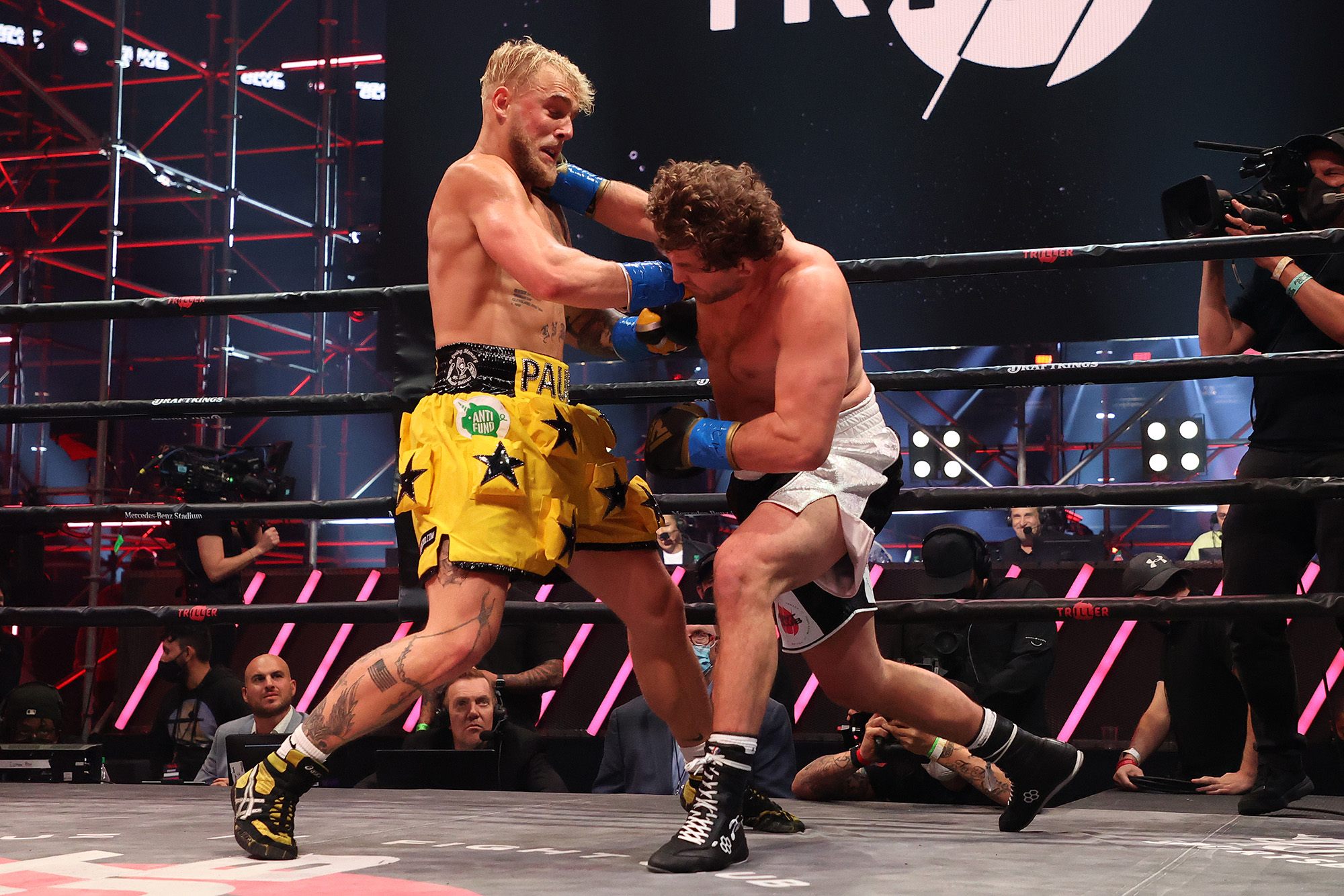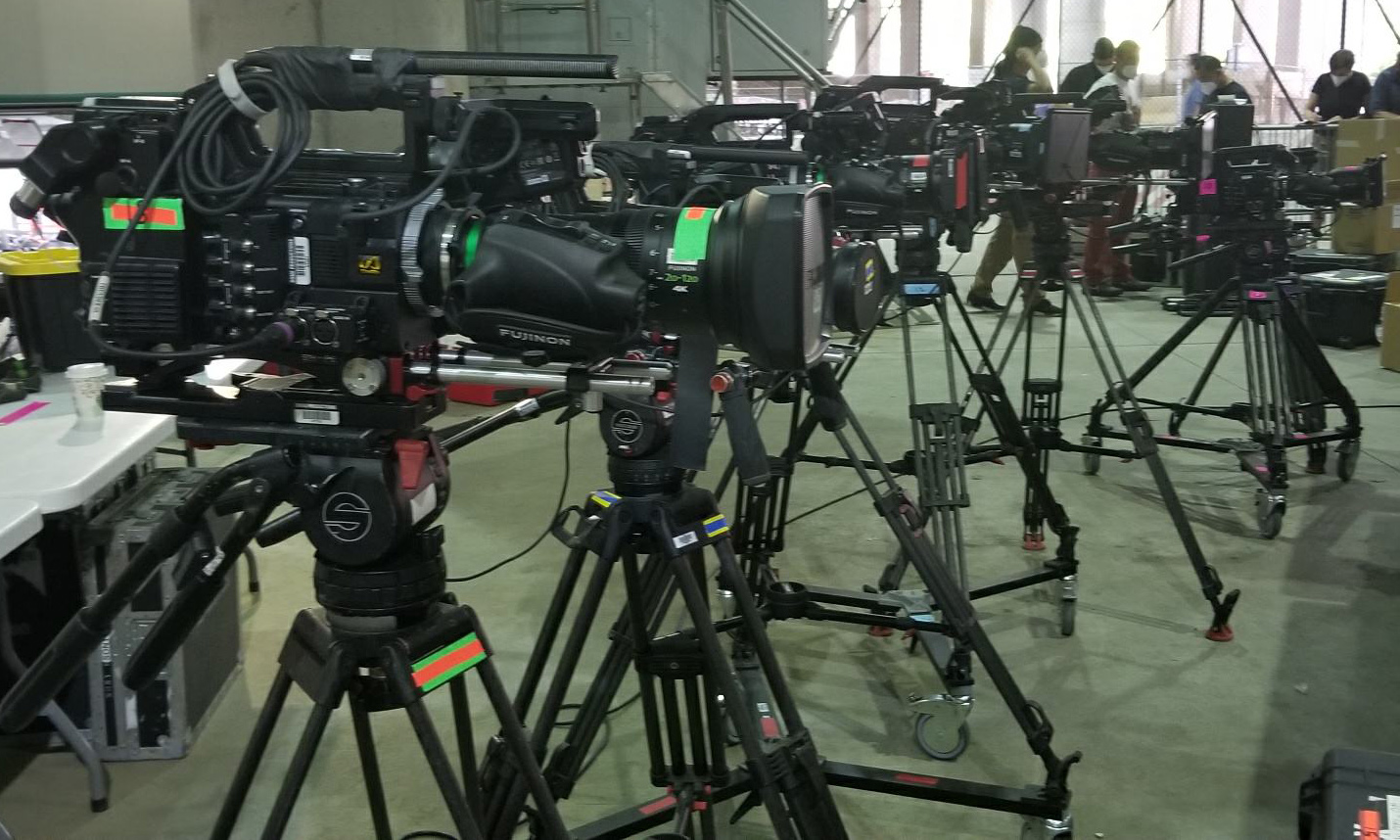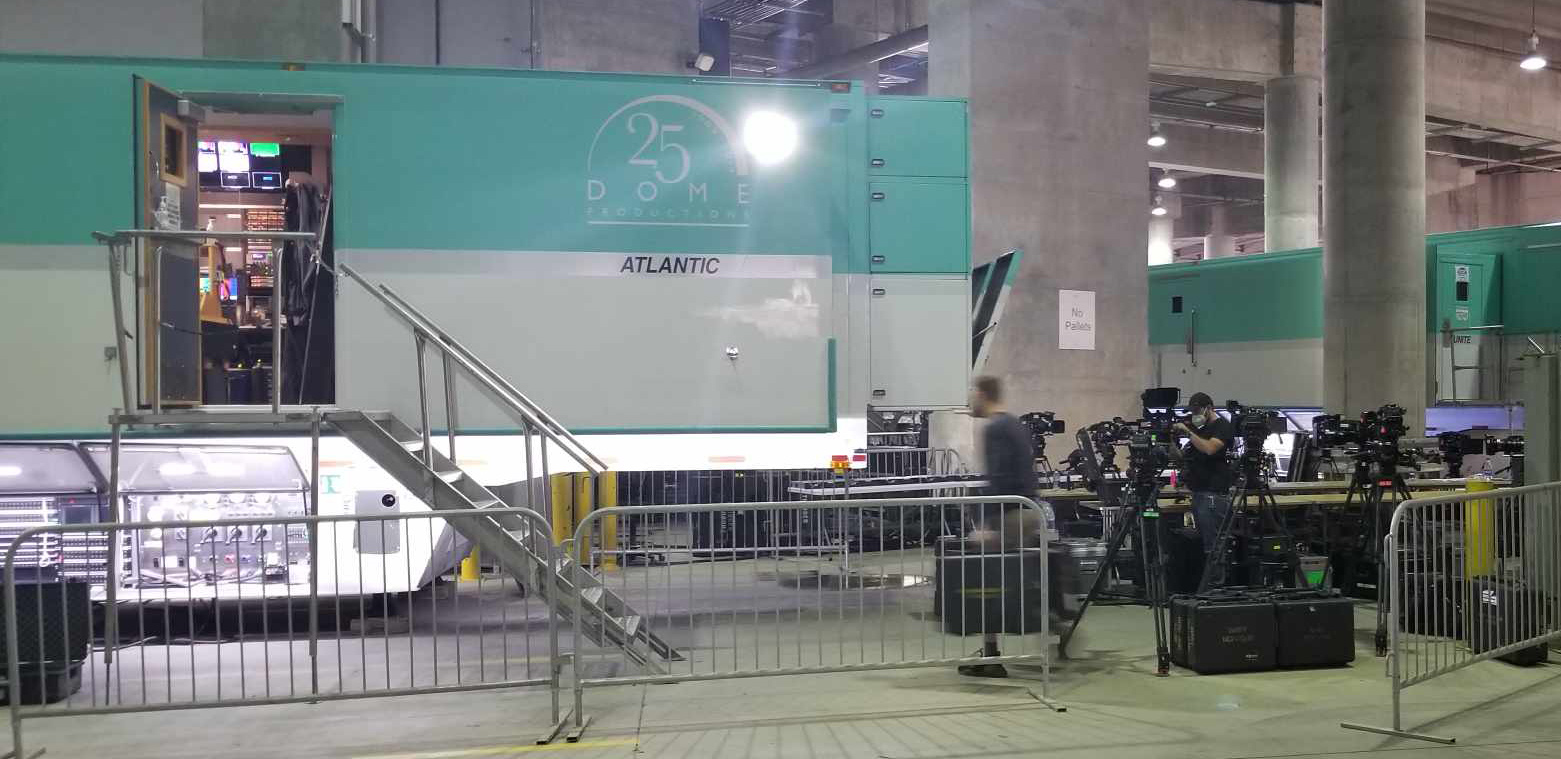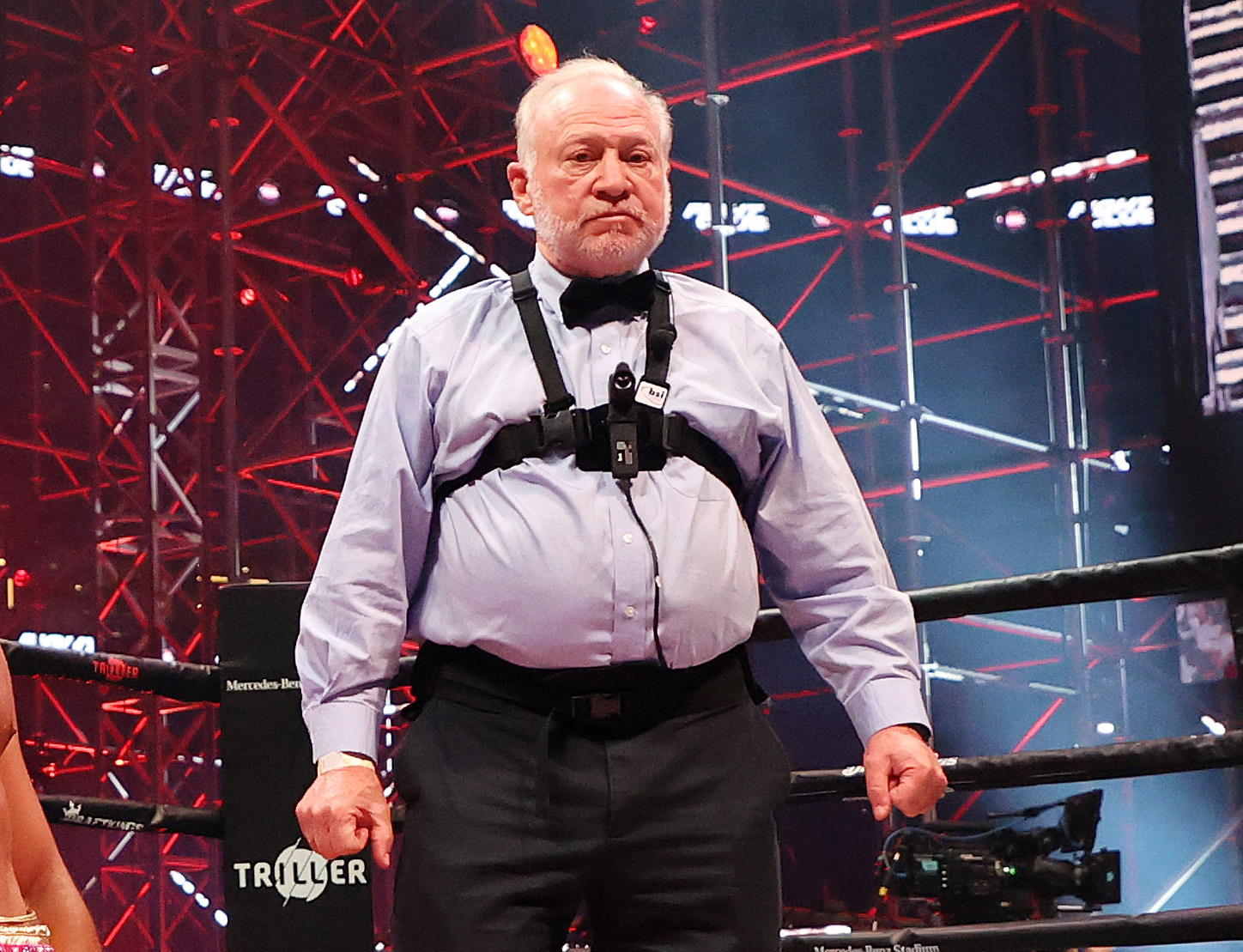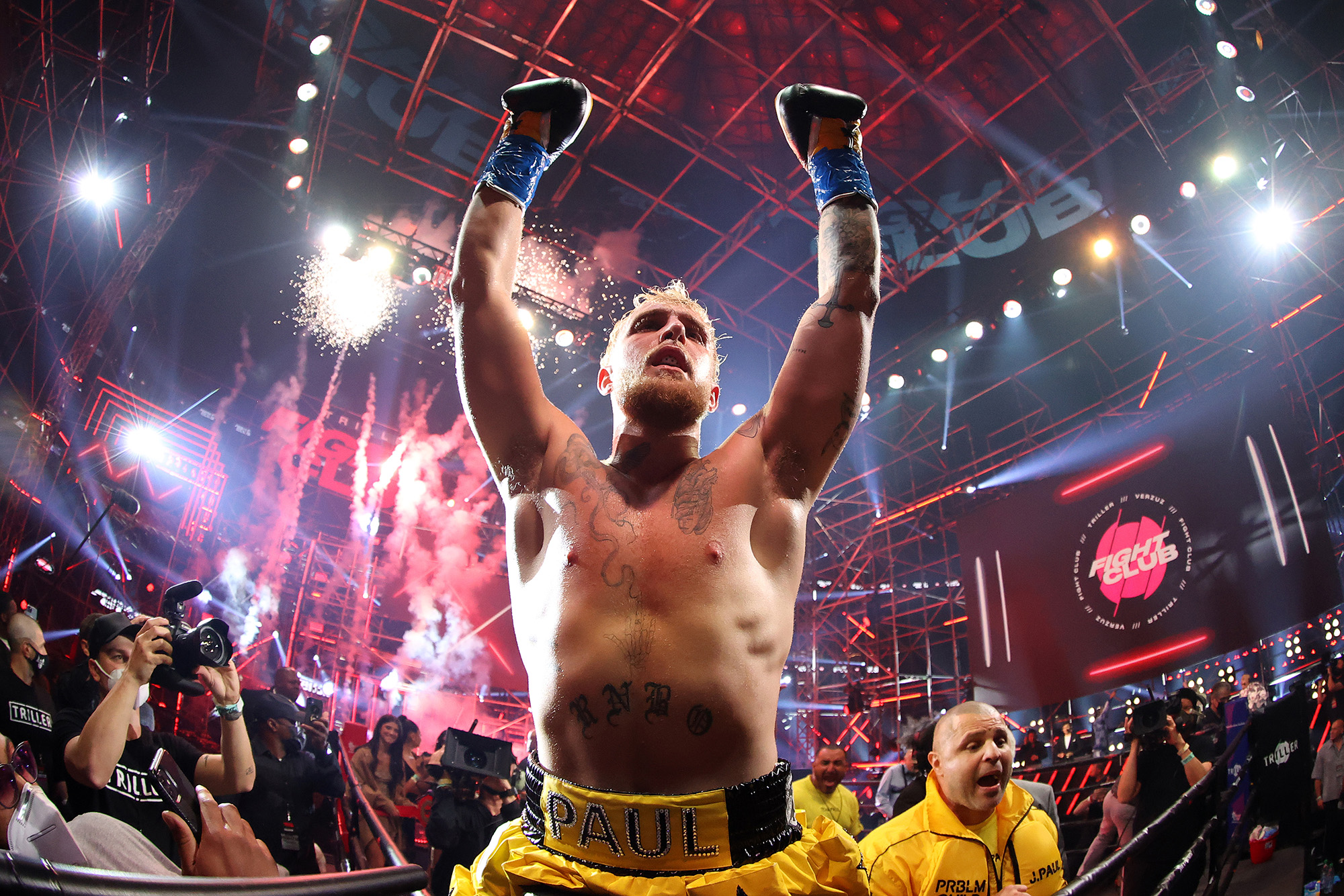Triller Fight Club PPV Brings Cinema-Style Tools Into the Sports-Production Ring
The goal was to blur the line between live sports and entertainment
Story Highlights
Live sports broadcasts have seen an influx of cinematic cameras in recent months — from CBS Sports’ use of the Sony Venice for its NFL and Masters coverage to Fox Sports’ extensive deployment of its Megalodon system to Turner Sports’ use of the Canon EOS C500 Mark II camera at the NBA All-Star Game. But, on Saturday night, Triller Fight Club took it to the next level with an end-to-end cinema-style live production featuring a whopping 18 Sony PMW-F55 CineAlta 4K cinema cameras.
The four-hour boxing/entertainment PPV event at Mercedes-Benz Stadium in Atlanta was headlined by a fight featuring YouTube-star-turned-boxer Jake Paul vs. Ben Askren and offered a star-studded list of musical performances by Justin Bieber, The Black Keys, and others. The PPV, which reportedly generated 1.5 million PPV buys on Saturday night, aimed to blur the line between live sports and entertainment with a heavy infusion of cinema-style production.
“Triller is trying to create a totally different environment for sports and entertainment content. It’s not just about boxing or just about the music acts; it’s about creating something totally new,” said Triller Coordinating Producer, Special Events, Paul Cambria prior to Saturday’s fight. “With that in mind, we’re trying to create a true cinema feel for this event with different cameras, different lenses, and huge sets. We’re looking to take your cookie-cutter boxing event and flip it upside down to make it different and more appealing for the younger viewing audience that Triller [appeals to].”
Going Cinematic: Cine-Style Cameras, Lenses for Live Sports
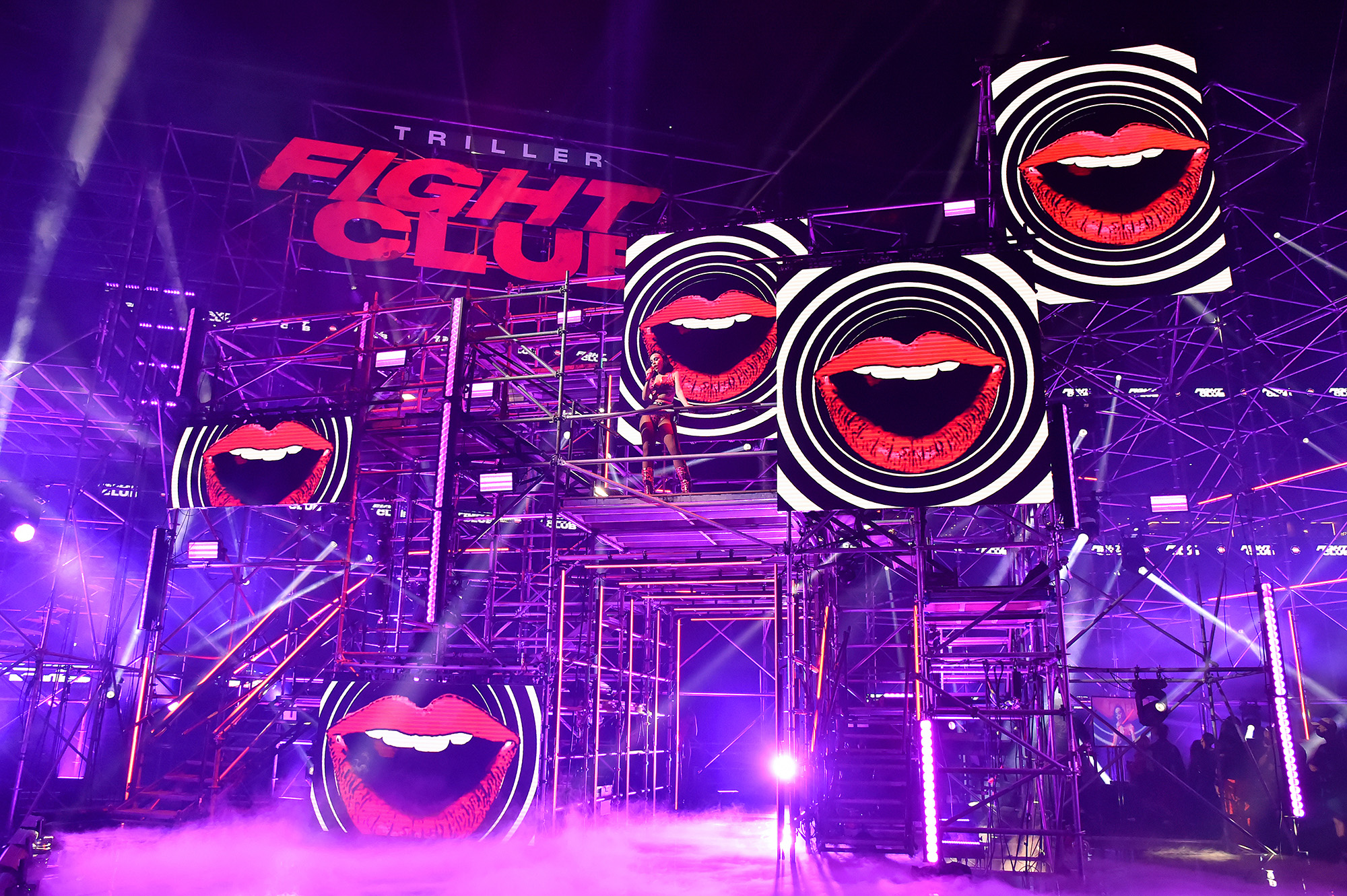
Triller Fight Club featured live musical performances throughout the night, including this one by Doja Cat.
Triller, the music-based social-media network behind the Fight Club series, enlisted Emmy Award-winning filmmaker Bert Marcus to bring a cinematic style not seen before in sports television. In addition, Echo Entertainment was brought in as the official production partner for the event, and TVG (The Visionary Group) was tapped to design and build the sprawling sets inside Mercedes-Benz Stadium.
“You are certainly seeing [cinematic cameras] a lot more these days on live sports on things like the Super Bowl and the Masters,” said Cambria, “but it’s really just one or two cameras. Our goal, driven by [Marcus], is to have every camera look that way. We’re trying to create the look and feel of a film throughout the whole show as much as we can, which is really different than any other live sports show right now.”
Immediately after beginning work on the project, Echo Entertainment hired Rick Siegel as director of photography and Tom Kenny as lighting director. They worked with Echo to evaluate the tools it would need its arsenal to pull off a live, cinematic production like the one Triller was envisioning.
“We knew we wanted the cinematic look, so we would need a full-frame sensor to achieve that,” say Echo Entertainment Technical Manager Pierce Williams. “We looked at a few options, including the Sony Venice, the ARRI Alexa, and the Sony 55. We ended up going with the Sony F-55 because we felt it was the most proven in a live environment. We have 18 of them here, and we’ve been really happy with them.”
As for glass, Echo selected a wide range of Fujinon Cabrio cine-zoom lenses, including the ZK25-300mm T3.5-3.85, XK20-120mm T3.5, ZK85-300mm T2.9-4.0, and ZK19-90mm T2.9.
“It all came down to finding that film-like look, and we felt like the [Fujinon] lenses capture that,” says Pierce, noting that lighting played an even more integral role than usual, given the unique demands created by a cinema-style live sports show.
“Lighting is a huge part for this show because we’re not shading cameras as much in the traditional sense; we’re not going to open and close iris constantly,” he says. “Instead, our LD is going to adjust the look through lighting so we can have that raw, gritty look, for both the boxing and the music.”
Production Complement: Inside the Compound, in the Ring, On-Stage
Echo and Triller partnered with Dome Productions on the production compound in Atlanta. Dome’s Atlantic mobile unit served as production home for the music/entertainment segments, while Thunder handled fight coverage. In addition, a pair of Dome’s flex units, Unite and B200, were on hand to house a variety of workstations necessary to socially distance the 173-person broadcast crew under the onsite safety protocols (which also included rigorous testing and specific zones for different departments).
Of the 28 cameras deployed for the Triller Fight Club production, 18 were PMW-F55 4K Super 35mm single-sensor cameras. Each camera was outfitted with a CA-4000 4K fiber-transmission camera-system adaptor back, and the signal ran through a BPU-4000 baseband processor before arriving in the camera-control unit (CCU) in the trucks onsite.
“Making a show of this size work with that many [F-55’s] is definitely a challenge,” says Williams. “We have a stack of all those BPUs outside the truck because the racks inside are already full. All the cameras are going through the BPUs outside the truck before they can hit the CCUs. One great thing is that all the cameras are going into all our switchers inside the trucks. We can utilize cameras in multiple places: the ring, the music stages, anywhere.”
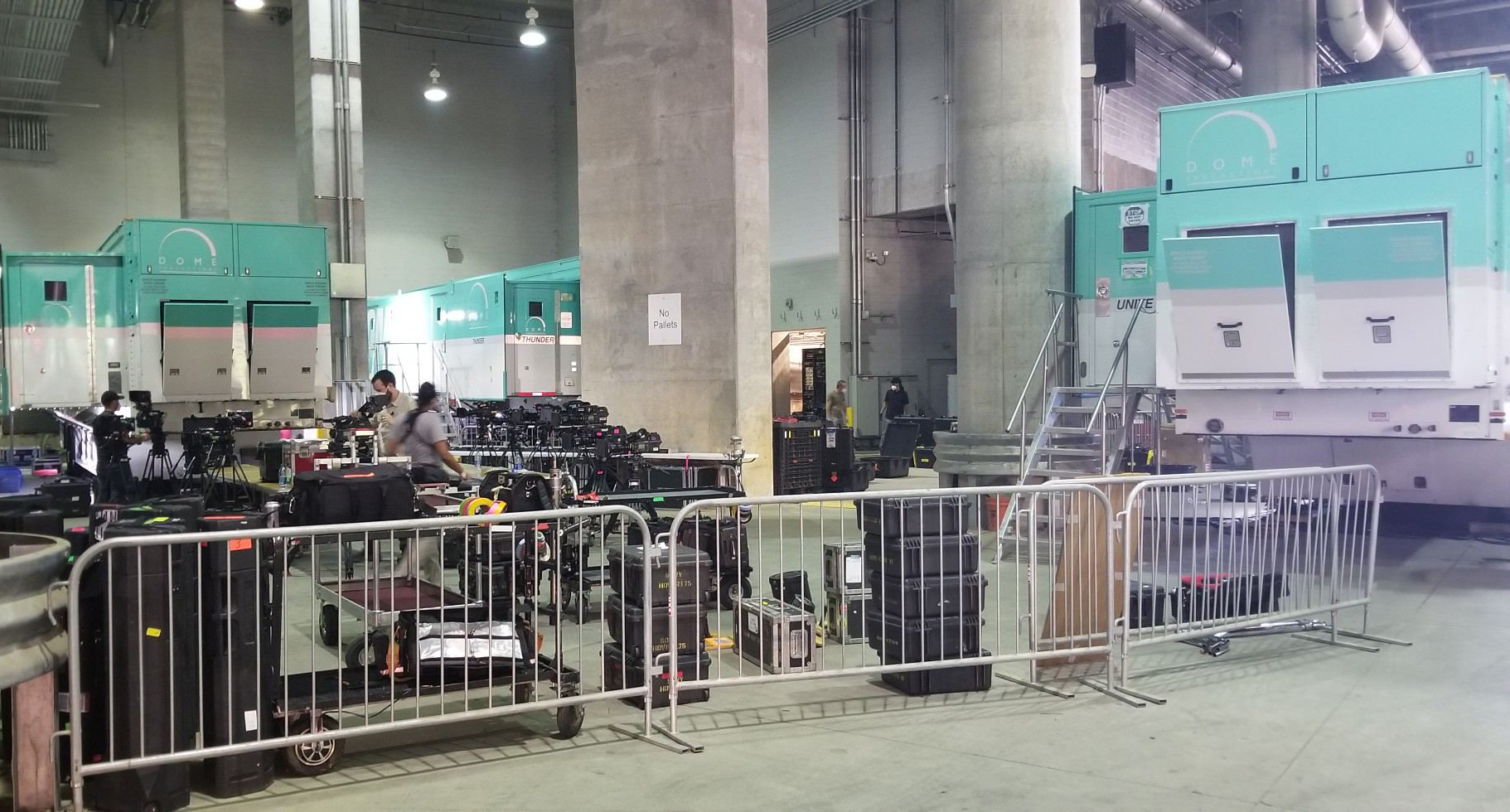 Two of the F-55’s were in super-slo-mo mode, and three were wireless RF systems supported by BSI: one standard RF, one Steadicam, and one with an ARRI Trinity stabilizer.
Two of the F-55’s were in super-slo-mo mode, and three were wireless RF systems supported by BSI: one standard RF, one Steadicam, and one with an ARRI Trinity stabilizer.
In addition to the three cameras, BSI also supported all the production team’s RF needs (including microphones and IFBs) and deployed three wearable POV cameras inside the ring: one on the ref, one on a member of each fighter’s team in their respective corners.
New Look for a New Kind of Event
Triller worked with TSG to erect multiple industrial-style sets inside Mercedes-Benz Stadium, including the ring itself and stages for the performers — all with LED displays and lighting integrated directly into the intricate scaffolding. In hopes of capturing compelling behind-the-scenes moments between the stars, TSG and Echo also created a lounge where the artists could interact when not on stage.
Although the sprawling footprint created a dynamic look for the broadcast, it also created new hurdles for the comms infrastructure, which comprised a mix of RTS ADAM systems, Riedel Bolero wireless beltpacks, and Unity Intercom software.
Triller also brought in UK-based Studio Moross to help create a unique new look for the graphics package and overall show.
The night culminated with Paul’s first-round knockout of Askren, which generated no shortage of social-media buzz. Next up, boxer Evander Holyfield returns to the ring for Triller Fight Club’s June 5 event in Florida.
“It has all been an interesting learning experience to go through this process and take all the expectations of my 20-plus years of doing sports broadcasting and basically throw it out the window,” says Cambria. “This is a totally different mindset. You have to break the mold of how you think about sports production and take more of an ‘anything-can-happen’ mindset. It’s pretty spectacular, and I couldn’t be more excited about it.”
